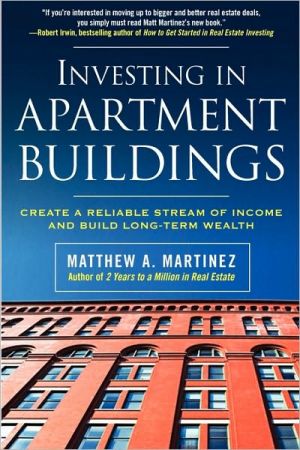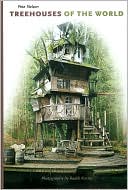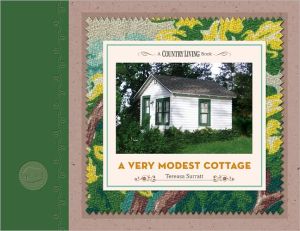Investing in Apartment Buildings: Create a Reliable Stream of Income and Build Long-Term Wealth
“Matthew's newest book, Investing in Apartment Buildings, couldn't have come at a more poignant time in our lives. He offers a modern day, step-by-step survival guide for the ever growing economic war on the middle-class. Win your own financial war by arming yourself with Matthew's systematic, hands-on experience and sound principals for investing in apartment buildings.”\ —Ryan Zahoruiko, principal, Forest Street Property LLC\ “Matt Martinez is able to take the complicated world of real...
Search in google:
"If you're interested in moving up to bigger and better real estate deals, you simply must read Matt Martinez's new book.” —Robert Irwin, bestselling author of How to Get Started in Real Estate InvestingThe Guide to the Hottest Real Estate Investment on the Market—Apartment Buildings“Matthew Martinez explains the complex subject of apartment investing in clear, concise terms that everyone will find accessible and readable. He includes valuable resources and demonstrates with numerous real-life examples how to get started in this lucrative segment of the real estate market.”—Michael C. Thomsett, author, Real Estate Market Valuation and Analysis and Beyond the Bubble“This entire book is a valuable must-read for anyone interested in multi-units, and shows investors how easy and profitable it can be investing in multi-units with Matt's guidance".—Andy Heller, coauthor of Buy Low, Rent Smart, Sell High and Buy Even Lower“Rich in advice and details needed for day-to-day operations, Matt's insights are extremely helpful to beginners and professionals alike. The next few years will set the stage for a 'once in a lifetime' opportunity to buy apartments at distressed prices. Buy this book, and get ready for the ride of your life!”—Marcel Arsenault, couthor, Foundations of Wealth: How to Build a Real Estate Empire“As a lender for apartment properties, nothing is more satisfying than to see a real estate entrepreneur invest in a value-add property, make improvements and realize tremendous profit. Matt's book provides the tools for success that are essential for anyone interested in building a winning real estate portfolio.”—Daniel M. Palmier, president & CEO, Potomac Realty CapitalMatthew A. Martinez has been profiled in TheWall Street Journal and Money. He is also a Real Estate Coach at AOL.com.
Investing in Apartment Buildings\ CREATE A RELIABLE STREAM OF INCOME AND BUILD LONG-TERM WEALTH \ \ By MATTHEW A. MARTINEZ \ McGraw-Hill\ Copyright © 2009 Matthew A. Martinez\ All right reserved.\ ISBN: 978-0-07-149886-9 \ \ \ Chapter One\ Multifamily Residential (Two to Four Units)\ Copyright © 2009 by Matthew A. Martinez. Click here for terms of use.\ If one advances confidently in the direction of his dreams, and endeavors to live the life which he had imagined, he will meet with a success unexpected in common hours.\ —Henry David Thoreau\ What You're About to Learn\ What a residential multifamily property is\ What a "small" multifamily property is\ The advantages and disadvantages of two- to four-unit multifamily residential properties\ Why novice investors should begin with smaller multifamily residential properties\ Multifamily housing is a form of residential property that has more than one unit in the same building. There are two basic categories of multifamily properties:\ Buildings with two to four units\ Buildings with five or more units\ Two- to four-unit apartment buildings can be acquired with residential loans, however, properties with five or more units require commercial loans. Because of this, and for the ease of differentiating these assets throughout this book, I refer to buildings with two to four household units as "small" multifamily properties. Two units in one building make a duplex, a building with three units is a triplex (a triple-decker in Boston), and one with four units is a quad or quadraplex. I refer to all properties with five or more household units within a building as "large" multifamily properties. Technically, however, all apartment buildings, regardless of the number of units, are classified as multifamily residential properties.\ The four-unit cutoff is not an arbitrary delineation mark but, rather, was created by lending institutions to distinguish between properties that individuals may purchase as their primary residences and properties that are acquired strictly as income-producing investment vehicles.\ A property with two to four units is still considered by lenders as residential; therefore, there are many more opportunities to finance this category of property through conventional programs.\ Lending institutions concluded a long time ago that it would be acceptable for an individual or family to buy a duplex, triplex, or quad and live in one of the units as a primary residence. Presumably, the rent from the remaining units would help offset the property's operating expenses and mortgage debt. They also determined that a buyer of an apartment building with five or more units would more likely be an investor, and thus a commercial loan would be required to purchase such a building. Because lenders have created this clear delineation, it's important that you understand the differences because you'll\ 1. Pay much less to secure financing for a small multifamily property than you will for a large multifamily property.\ 2. Have many more loan programs available to you when you purchase small multifamily properties.\ 3. Be the beneficiary of less-restrictive bank underwriting guidelines with small multifamily properties.\ Residential multifamily loans for buildings with two to four units are much easier to secure, are less costly, and require less up-front capital to close. In fact, many FHA loan programs are available for two- to four-unit housing. Residential loans are fairly easy to qualify for because lenders are primarily concerned with the loan applicant's personal credit rather than the viability and profitability of the building from a purely business or rental perspective.\ In my opinion, novice investors should first "cut their teeth" on small residential multifamily buildings before buying, for example, a 10-, 20-, 50-, or 100-unit apartment complex. Countless aspiring investors have approached me during the past few years searching for validation of their plans to begin with a large multifamily acquisition. They preferred to think and act big and to achieve higher returns more quickly. Admittedly, above-average returns are possible with larger properties; however, and contrary to conventional wisdom, they are not always achieved, because maximizing returns really depends on how you buy the property and what you do with it, not on the number of units.\ The following is an e-mail from my real estate mentor, who has more than 40 years of experience in the business:\ Matt,\ I've been searching for properties in Florida for the past two years, and the numbers just don't add up. I can buy a triple-decker in Boston and achieve a higher return on my equity than if I buy a 50-unit apartment building down south.\ I strongly advise individuals entering this field for the first time to begin with a small multifamily property and learn the best way to manage buildings, tenants, operating expenses, and property managers. Take your time, and learn this business without jeopardizing your finances. Should you make an error in judgment with a large multifamily property, you run the risk of losing everything you own. After you've achieved a semblance of competence and gained critical hands-on experience with smaller properties, you then will be in a position to determine whether you're capable of graduating to the next level.\ Both my real estate mentor and I own a combination of small and large multifamily properties. We also agree that owning larger buildings doesn't always lead to greater returns. In fact, it is true that smaller multifamily properties are easier to buy, finance, and dispose of when the time is right. Undoubtedly, you might make as much money, if not more, from buying a quad as from some larger properties with 30 or more units. This is evident because profiting from real estate transactions isn't completely dependent on buying large buildings—it really depends on several factors, such as where you're buying, how good a deal you were able to negotiate, and how well you're able to manage and improve the value of that particular asset.\ Buildings with fewer than five units offer several distinct advantages:\ Financing. As mentioned previously, financing requirements for small properties are much more favorable. Closing costs are significantly less, and banks are more willing to lend on this kind of property if the buyer has good credit. Rental income from the non-owner-occupied units can be used in calculating the buyer's qualification ratios. Also, VA and FHA loans are available for these kinds of properties, reducing the up-front capital required for the purchase. Finally, interest rates can be significantly lower if owner-occupied financing is obtained.\ Down payment requirements. One can purchase a two- to fourunit building as an owner-occupant (i.e., you live in one of the units) with a relatively low down payment (perhaps less than 5 percent down, in some cases). Lower down payments are offered to owner-occupants because the risk of default is statistically much lower if the owner is residing in the property.\ Learning curve. Understanding every aspect of a property is critical to your success, and managing smaller properties tends to be much easier and faster to master if you have limited experience.\ Cash flow. Smaller properties certainly can lose money each month (like their larger counterparts), but the worst-case scenario isn't as earth-shattering. If your property's operating expenses and debt service significantly exceed its effective gross income (more on these calculations later in the book), your negative cash flow won't be nearly so large with a smaller property as it could be with a larger one. If your 100-unit multifamily building is hemorrhaging, the losses can be staggering!\ Management. You can manage smaller properties on your own, but you're likely to require assistance with larger multifamily buildings. Managing a property yourself will save you the added expense of hiring a property management company, and will provide you the opportunity to learn how to manage these assets at the beginning of your career.\ Liquidity. Because smaller multifamily assets cost less to acquire and are easier to finance, they often sell much more quickly than larger properties because the potential universe of buyers is far greater. Admittedly, quick sales ultimately depend on pricing (among other factors); however, two- to four-unit buildings tend to sell more rapidly on average (assuming that the seller is reasonable on the market's cap rate–driven price) for all the reasons previously mentioned.\ From the buyer's perspective, small multifamily properties offer the distinct advantage of acquiring an apartment building as a primary residence. For instance, you could buy a triplex, live in one of the units, and use the rental income from the other two units to pay the mortgage, insurance, maintenance, and property taxes each month. Essentially, you can be living mortgage-free if you buy the property at a decent price and manage it properly. Some of the savviest investors I know started their careers in real estate by doing exactly that.\ Getting Your Feet Wet before Jumping into the Deep End\ Countless individuals I know purchased their first apartment buildings with a great deal of enthusiasm and even greater determination to succeed—only to realize a few months or years later that being a landlord wasn't a business they really wanted to pursue. I suspect that, after receiving phone calls from irate tenants at inconvenient hours of the day, being surprised by operating expenses that hadn't been anticipated, and having to shoulder the financial burden during the months when higher-than-expected vacancies resulted in negative cash flows, they became disenchanted with the prospect of being a landlord.\ Life as a real estate entrepreneur might seem at first like a rather glamorous avocation, especially if you envision yourself driving around town admiring your vast holdings while you revel in the fact that they are producing a sizable income for you and your family. However, you shouldn't quit your day job and/or make any definitive decisions about your vocational future until you've had the opportunity to experience both the highs and lows of being a landlord. Furthermore, you should consider the acquisition of larger properties only after you've concluded that this business is one you enjoy and one that you truly want to pursue.\ Chapter Summary\ Residential multifamily properties are divided into two subcategories: those with two to four units and those with five or more units.\ Residential loans can be used to acquire buildings with two to four units.\ Commercial loans are needed for buildings with five or more units.\ Two- to four-unit properties offer several distinct advantages, including being easier to finance, with lower interest rates and down payment requirements; providing a greater number of potential buyers upon disposition; being less management-intensive; and having less overall (depending on the area and purchase price) financial risk.\ Learn the business with smaller properties and use them as stepping-stones to owning larger multifamily properties.\ Chapter Two\ Multifamily Residential (Five or More Units)\ Copyright © 2009 by Matthew A. Martinez. Click here for terms of use.\ Worry about being better; bigger will take care of itself.\ —Gary Comer\ What You're About to Learn\ What a large multifamily property is\ Advantages of larger properties\ Disadvantages of larger properties\ How to dissect larger properties\ How apartment buildings are graded\ As mentioned in the previous chapter, I refer to buildings that consist of five or more units as large multifamily properties because they require commercial loans to purchase them (this allows me to separate multifamily residential properties into two distinct categories). Thus, to purchase a 5-unit apartment building, just as to purchase a 10-, 20-, 50-, 100-, or 1,000-unit complex, you will need to obtain a commercial loan. Regardless of the actual number of units, owning large multifamily assets should be your long-term objective, but only after you've gained some experience and have decided to make a commitment to being a real estate investor. After all, owning a 50-unit building with 50,000 square feet of rentable space and 50 or more tenants is going to be much more time-consuming and challenging than owning a triplex with 3,000 square feet and only 3 tenants.\ Just as there are numerous advantages to buying small multifamily apartment buildings, there are also distinct advantages to owning and operating larger apartment buildings. Some of the advantages include the following:\ Consolidation. If you own nine units in three separate triplexes, you'll have three separate roofs, backyards, front doors, driveways, and so on to maintain. It's often much easier to have all nine units under one roof.\ Property management. There are economies of scale when you own larger buildings. Using the previous example, you or your property manager could visit everything in one trip—seeing all nine units at once rather than having to drive to three different locations to inspect the same number of apartments. Also, as a percentage of rental income, professional management for larger properties tends to cost less. A triplex might cost you 8 to 10 percent of gross income, while a 50-unit building might cost you only 3 percent.\ Vacancies. One vacancy in a ten-unit building equates to a 10 percent vacancy rate. One vacancy in a three-unit building equates to a 33 percent vacancy (or more than three times as much as for the larger property).\ Cash flow. If the property is managed well, the resulting cash flow could yield far superior returns. That said, it's much more challenging and could require a significant up-front and ongoing investment to maintain a larger property at steady state (i.e., 90 to 95 percent occupancy in some urban areas) while keeping all of the operating expenses in check. Ultimately, the return on your invested capital is a function of the purchase price, value-added measures, management, and other such factors, so superior returns are not necessarily determined by a property's size.\ Nonrecourse debt. This kind of financing does not require the borrower to assume personal liability for the loan. The loan is typically secured by the real estate being purchased, but the borrower is not personally liable. If the borrower defaults, the lender can take ownership of the property in a foreclosure proceeding, but the lender is limited only to the value of the collateral (property) being pledged. In other words, if the borrower defaults on a nonrecourse loan, the lender is likely to foreclose on the property and take control of the asset; however, the lender cannot sue you personally for any deficiencies. Nonrecourse debt is normally available only with commercial loans.\ Some of the drawbacks associated with large apartment buildings are:\ Commercial financing. Buyers of large properties are not offered the "cookie-cutter" financing programs that are offered to buyers of small multifamily buildings. Commercial mortgages require extensive due diligence on the part of the bank and substantially more paperwork from the buyer to justify the purchase.\ Down payment. The down payment tends to be far greater when you buy larger buildings. Most commercial lending institutions require a minimum of 20 percent down when buying a building with five units or more.\ Lending requirements. These are much more stringent. Banks will spend significantly more time underwriting these deals and analyzing your projections. Lenders must know that their investments are sound. For instance, your debt service coverage ratio (DSCR) will probably need to be at least 1.2 or greater (more on this topic later). Historically speaking, lenders on small multifamily properties conduct much less due diligence than lenders on large properties. Ultimately, a commercial lender's primary concern is with the property's performance rather than anything else.\ Capital improvements. The investment required for capital improvements (particularly on large value-add deals) tends to be far greater simply because of the number of units and the size of the property.\ Property management. Management of these properties is much more labor-intensive and might require an on-site manager. Because you may not be able to manage a large property by yourself, you'll need to budget for this additional expense.\ (Continues...)\ \ \ \ \ Excerpted from Investing in Apartment Buildings by MATTHEW A. MARTINEZ Copyright © 2009 by Matthew A. Martinez. Excerpted by permission of McGraw-Hill. All rights reserved. No part of this excerpt may be reproduced or reprinted without permission in writing from the publisher.\ Excerpts are provided by Dial-A-Book Inc. solely for the personal use of visitors to this web site. \ \








